
How to Give Ghosts a Sunburn
The main series in this theme are hand embroidered interventions on printed fabric. The images of various places and people are related together as subjects that are unable (or unwilling) to be claimed. This unfinished business is embodied by the obstacle of the embroidered PROOF watermarks. Inspired by traditional printmaking processes, the series attempts to hold the desire for archival presence with the problems of its structure.
Even as queer and racialized people are gravitating towards archival practices—from which we were once excluded—the form of the archive itself still retains the structure of the problem: their inherently limiting boundaries of authority, (in)accessibility, ethnographic classification, and penchant towards legible representation. How do we hold space for the unrecorded, the unrecordable, and the yet-to-be-recorded? What if our desire for documentation might be damaging? The challenges of commemoration beckon me to consider what queer theorist Jack Halberstam refers to as “new forms of memory that relate more to spectrality than to hard evidence, to lost genealogies than to inheritance, to erasure than to inscription.”
My text-based pieces borrow the institutional pen of templates, academia, and forms, while displacing their functions through skeptical lived experiences. The works use an ironic and humorous tone to recognize the limits of their own structure, and to sustain a necessary uncertainty. Two of such pieces were made as outdoor responsive installations. The Pseudo-Monument is a vinyl and wooden cube put at the center of Rochford Park in Charlottetown, PEI, questioning the neutrality of all structures through the phrase A MONUMENT IS AN ALTAR; YOUR GLANCES ARE ALL PRAYERS. It accompanies another work that was put a few blocks away. A van with the logo Monument Movers Inc. Disposal and Reparations is parked in front of a bronze cast statue of John A. MacDonald that the city commissioned decades earlier. This fake company is a speculative exercise that manifests the demands of many groups to remove the statue.
***
I also want to propose other ways of thinking about commemoration. "Please Help Yourself" is a collection glazed ceramic pieces meant to resemble tangerine peels. The offering of tangerines is reminiscent of the ways that Cantonese people often welcome guests in their home or share with strangers. We propose these inconspicuous leftovers of gatherings as alternative monuments, emphasizing collectivity and care over the history of glorifying individual and colonial exploits. The project also turned into a collaborative endeavour during the pandemic: friends and family received clay in the mail with instructions allowing them to “share a tangerine” with us. The sculptures then also become commemorative objects of loss and longing.
In the Empty / Lucky series, the character 吉 is used as a fabric appliqué on the backs of misprinted photographs, and then installed within the rough framing of timber walls, simulating the hollow structures inside houses. When my grandparents fled Vietnam after the fall of Saigon in 1975, my grandfather was only allowed two suitcases, and he chose to fill it with photo albums. He cherished his family photos so deeply that he labelled the empty spaces in the photo sleeves, so as to not think something was missing from that pocket. Due to cultural superstitions, the word empty 空 in Cantonese is cursed because it is a homonym for the words evil or criminal 兇. Hence, Cantonese speakers will write the character 吉, meaning lucky, auspicious, fortunate, as a textual stand-in for emptiness. Regarding its inclusion in an exhibition about the liberatory possibility of invisibility in trans archives, curator Dallas Fellini writes:
“Here 吉 at once represents a yearning for what might be missing from the archive and a proposal to sit comfortably in absence and unrecordability. Yee responds to and reframes anxiety around an association of emptiness with evil and criminality, instead casting this association into a space of potential. In the context of an archive complicit in the disenfranchisement and antagonizing of racialized trans people, silence holds the ability to become countermythological.”
Much of this work was made possible with the support of the Canada Council for the Arts and the Ontario Arts Council.

A Legacy of Ethnography
Hand embroidery on printed cotton voile
36” x 48”
2021

A Legacy of Ethnography (detail)
Hand embroidery on printed cotton voile
36” x 48”
2021

installation view of 'Indiscernible thresholds, escaped veillances', curated by Dallas Fellini, Art Museum of University of Toronto, 2024
hand-embroidery and applique on printed fabric and spruce wood structures. Photo by Toni Hafkenscheid.

Installation view of 'Indiscernible thresholds, escaped veillances', curated by Dallas Fellini, Art Museum of University of Toronto, 2024
applique on printed poly linen and spruce wood structures. Photo by Toni Hafkenscheid.

Lucky / Empty Pomelo
applique on printed poly linen and spruce wood structures, 2024. Photo by Toni Hafkenscheid.

Lucky / Empty Perennial (close-up)
applique taffeta on printed poly linen, 36" x 48", 2024

installation view of 'Indiscernible thresholds, escaped veillances', curated by Dallas Fellini, Art Museum of University of Toronto, 2024
applique on printed fabric and spruce wood structures. Photo by Toni Hafkenscheid.

for previously unlightable spaces
printed silk, installed as part of 'indiscernible thresholds, escaped veillances,' curated by Dallas Fellini, at Art Museum, University of Toronto, 2024

PROOF--Anti-Displacement Chinatown Garden
hand embroidery on inkjet printed cotton voile, 37” x 50”, 2020.

PROOF--Anti-Displacement Chinatown Garden

PROOF--Anti-Displacement Chinatown Garden

PROOF--Chinatown Anti-Displacement Garden
installation view at Gallery 44. Photo by Darren Rigo

installation view at Gallery 44, PROOF 28. Photo by Darren Rigo

PROOF--Community is easy to romanticize
Hand-embroidery on cotton
36” x 48”, 2022
Photo by Darren Rigo. Exhibited as part of PROOF 28 at Gallery 44, June 2022
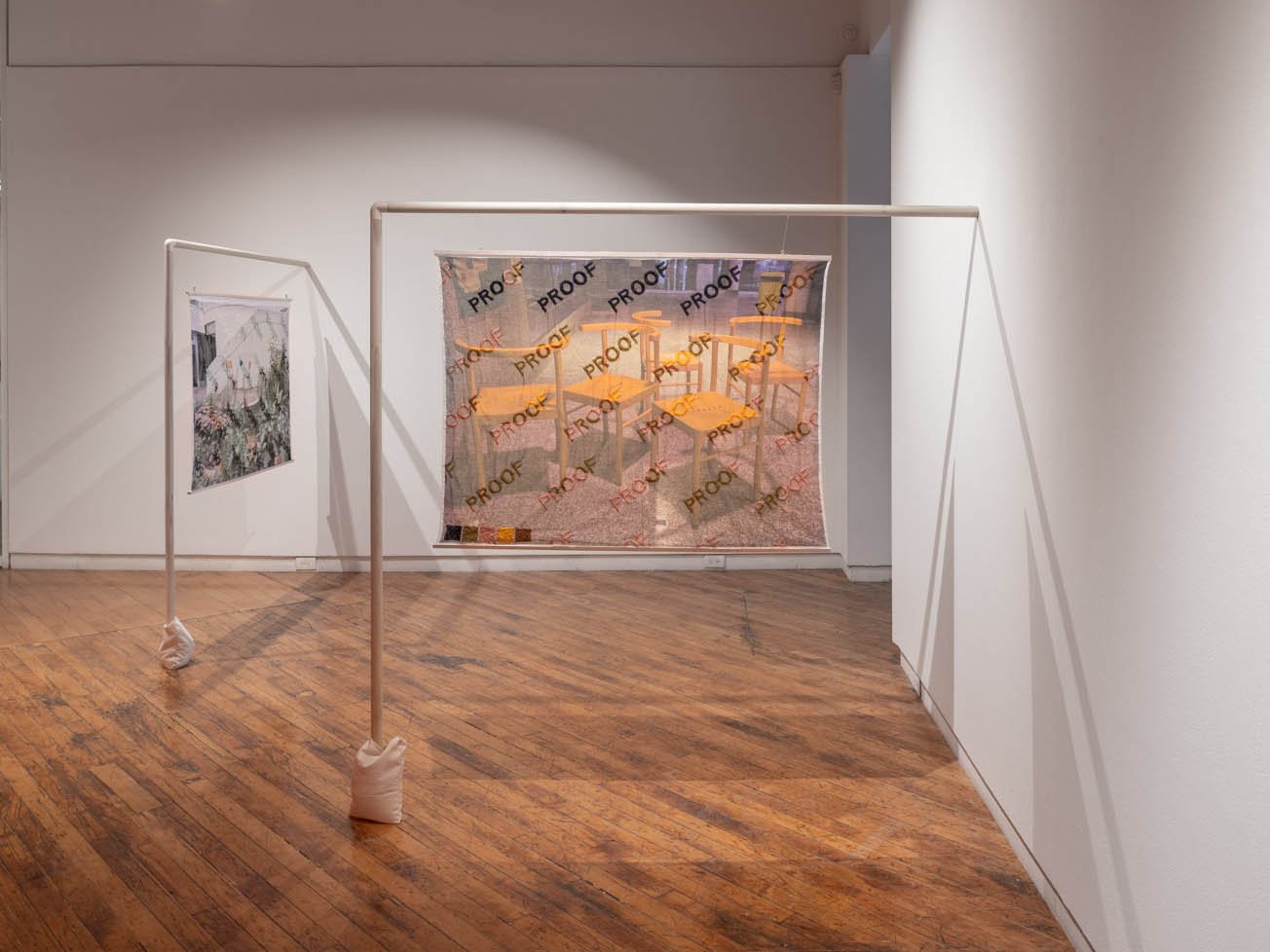
PROOF--Community is easy to romanticize
Photo by Darren Rigo. Exhibited as part of PROOF 28 at Gallery 44, June 2022

Installation view of 'Sharper Tools for Unripe Fruit' at Neutral Ground
June 2022. Photo by Daniel Paquet

After Cruising Utopia
48” x 36”. Hand-embroidered cotton print, 2022. Photo by Daniel Paquet

PROOF--Bedroom in Scarborough
hand embroidery on inkjet-printed cotton voile
37” x 50”, 2021

PROOF--Recipe Book
hand embroidery on inkjet-printed cotton voile
48” x 36”, 2021

PROOF--Recipe Book
hand embroidery on inkjet-printed cotton voile
48” x 36”, 2021
installation at the Varley Art Gallery, 2021, exhibition titled “Elusive Desires”, curated by Marissa Largo.
Photo by Toni Hafkenscheid

Staging for Change
hand-embroidered thread on printed cotton, 67” x 84.5”, 2025. Exhibited at the Libby Leshgold Gallery as part of the Indiscernible thresholds, escaped veillances.

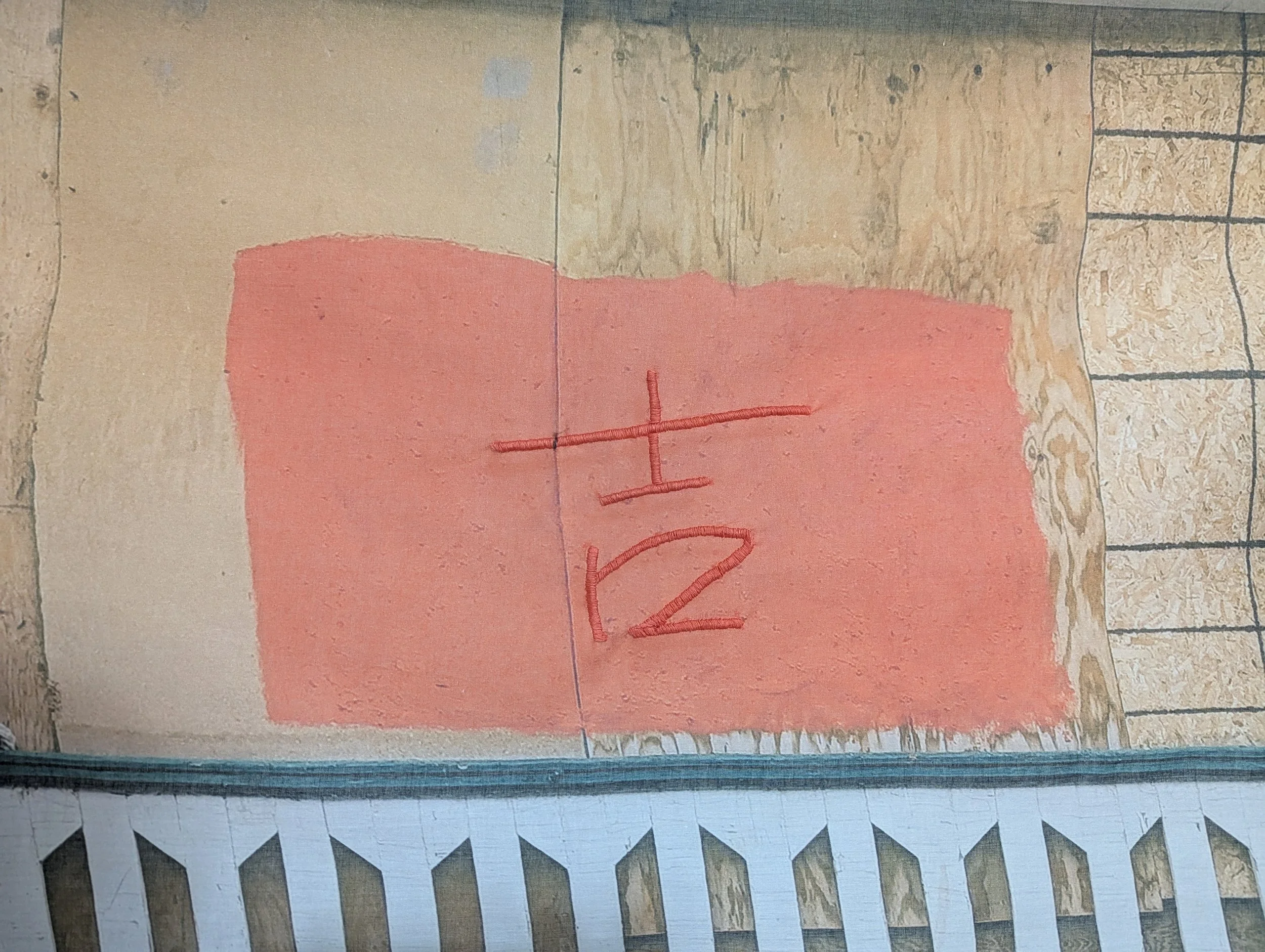
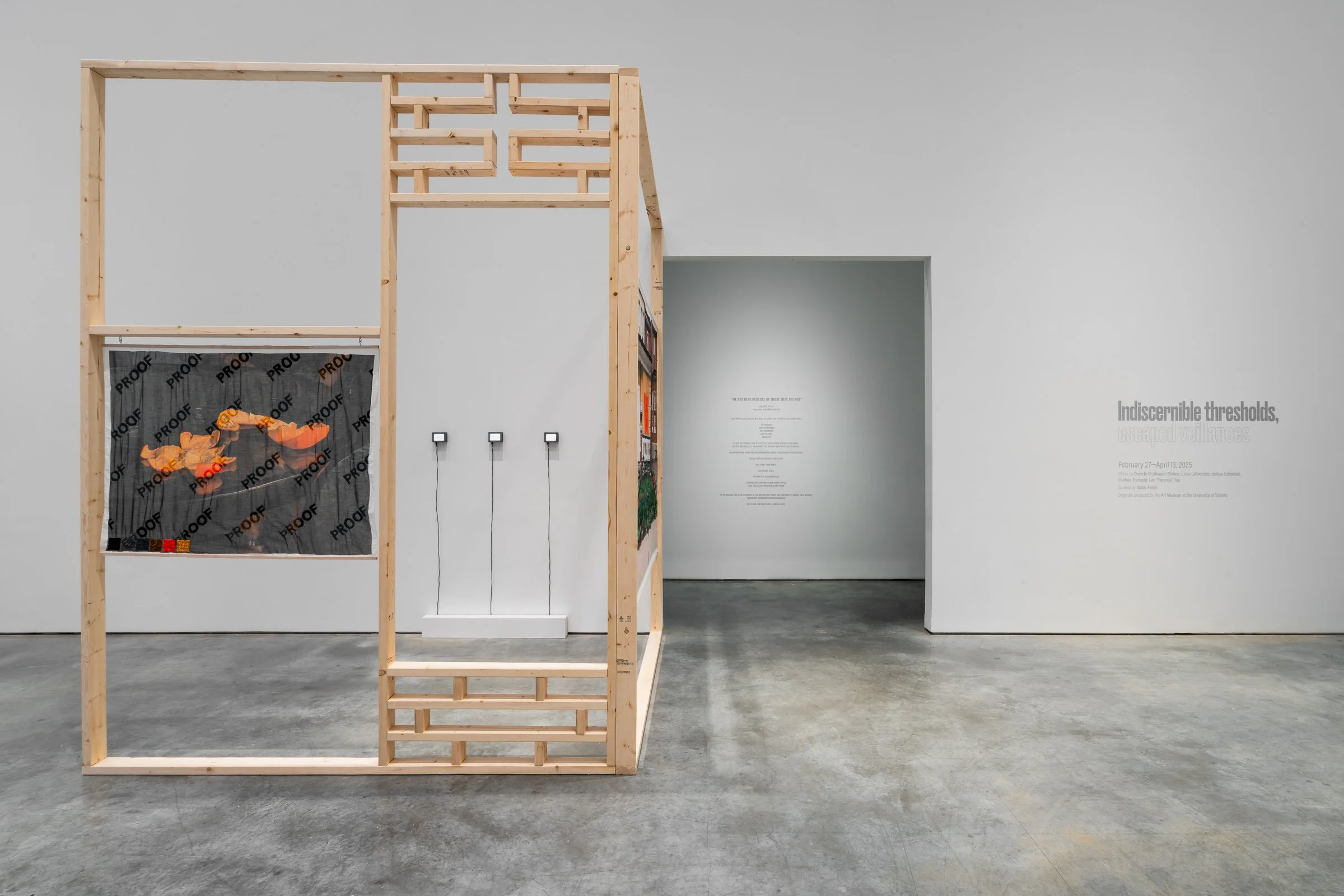
installation view at Libby Leshgold Gallery, part of the exhibition Indiscernible thresholds, escaped veillances, curated by Dallas Fellini, 2025.
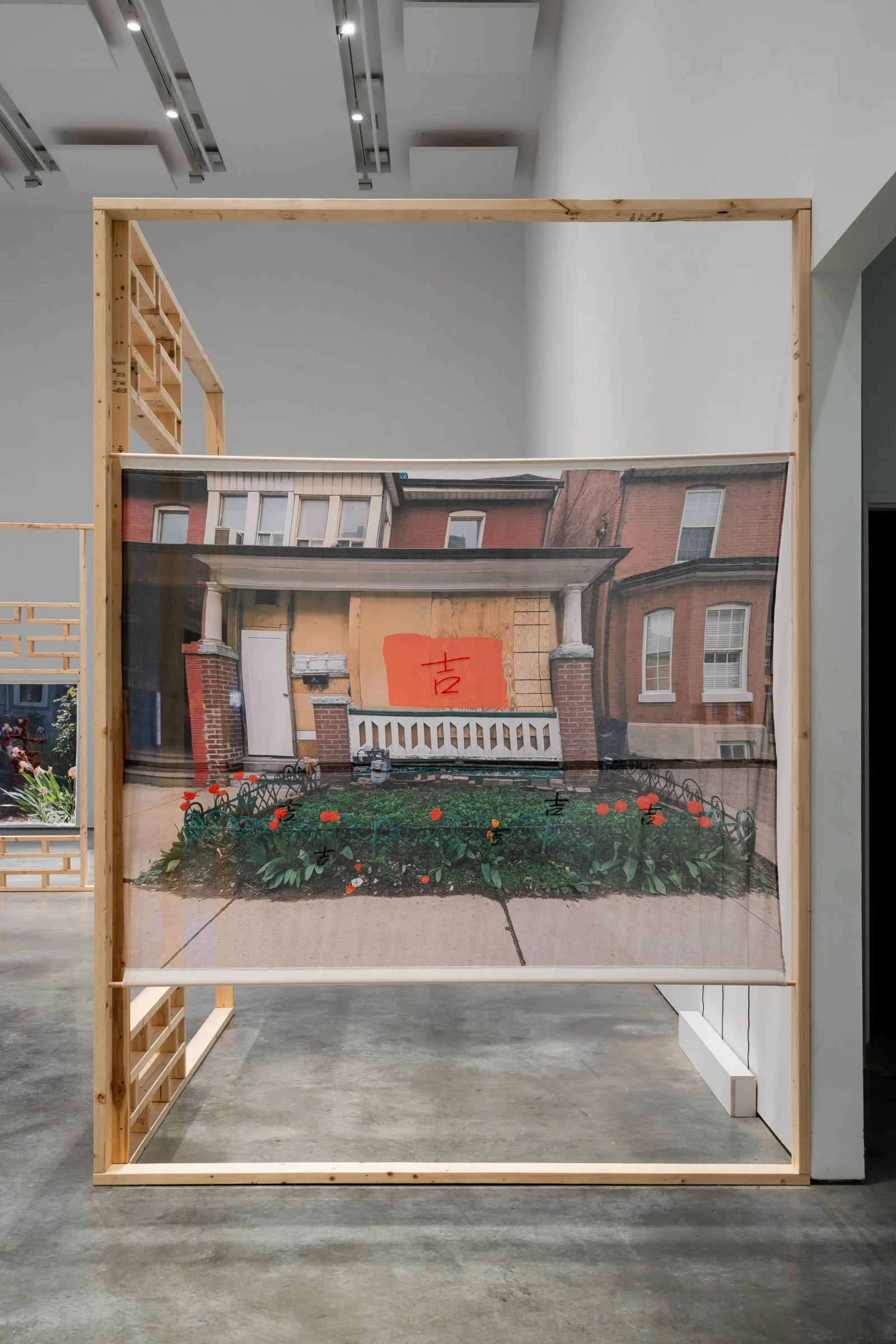
Staging for Change
hand-embroidered thread on printed cotton, 67” x 84.5”, 2025

installation view at Libby Leshgold Gallery, part of the exhibition Indiscernible thresholds, escaped veillances, curated by Dallas Fellini, 2025.

RECOVERED--Recipe Book
Tinsel weaving with printed linen. Created after the original PROOF—Recipe Book was lost in transportation.
36” x 48”, 2022

PROOF—Sharing goji in amiskwacîwâskahikan
Hand embroidery on cotton voile inkjet print, 37” x 50", 2022.

PROOF--Please Help Yourself
Hand embroidery on cotton voile inkjet print, 37” x 50", 2021.

Please Help Yourself
Collaboration with Arezu Salamzadeh
Glazed ceramic
various dimensions, approx. 3” x 3”
2019—


Installation of PROOF series at the Robert McLaughlin Gallery, as part of the exhibition, How to Give Ghosts A Sunburn, Oct-Dec. 2021.
Photo by Darren Rigo.

Please Do Not Touch
The text on the fabric reads: “THE GALLERY LEFT RED DOT STICKERS OUT FOR BUYERS TO PURCHASE PIECES / A STRANGER CAME UP TO ME AND STUCK ONE ON MY CHEST THEN COMPLIMENTED THE QUALITY OF MY FRENCH”
hand embroidery on inkjet-printed cotton voile with 32 embroidered red dots. 4’ x 8’, 2021.
Installation at the Robert McLaughlin Gallery, 2021
Photo by Darren Rigo.

Please Do Not Touch
The text on the fabric reads: “THE GALLERY LEFT RED DOT STICKERS OUT FOR BUYERS TO PURCHASE PIECES / A STRANGER CAME UP TO ME AND STUCK ONE ON MY CHEST THEN COMPLIMENTED THE QUALITY OF MY FRENCH”
hand embroidery on inkjet-printed cotton voile with 32 embroidered red dots. 4’ x 8’, 2021.
Installation at the Robert McLaughlin Gallery, 2021.
Photo by Darren Rigo.

Please Do Not Touch
Photo by Darren Rigo.

Please Do Not Touch
Photo by Darren Rigo.

Pseudo-Plaque
bronze cast, 2” x 6”, 2021. Collaboration with Aisha Ali and Andalah Ali. Installation at the Robert McLaughlin Gallery. Photo by Darren Rigo.

Rubbings of Pseudo-Plaque
graphite on copy paper, edition of 50, available for the public to take at the exhibition at the Robert McLaughlin Gallery exhibition, “How To Give Ghosts A Sunburn”

Untitled (my grandmother's basement photo albums)
5” x 7”, hand-embroidered cotton, 2021. Photo by Darren Rigo

Untitled (my grandmother's basement photo album)
5” x 7”, hand-embroidered cotton, 2021. Each spread reproduces the found photo album’s cover in embroidery and decreases in saturation with every turn. Photo by Darren Rigo.


Pseudo-Monument
Vinyl on wooden armature, 5’ x 5’ x 5’, Installed at Rochford Park during the Art in the Open festival, 2020. Photo by Misiksk Jadis

Monument Movers Inc.
Vinyl stickers on rented van, installed in front of the John A. MacDonald statue in Charlottetown, PEI, during the Art in the Open festival, 2020 (*statue now removed in 2021). Photo by Robin Gessy

Monument Movers Inc. (detail)
detail of vinyl stickers on the rented van. Photo by Robin Gessy

You Listen Better to Echoes
text installation on rented road signage, in the parking lot of Saint-Anne’s Parish, in collaboration with Long Winter TO and Tristan Sauer, 2021.

EVERY TIME I ALMOST CAME OUT TO YOU
found photo album, hand-embroidered felt, and white archival gloves. 2019. Photo by Toni Hafkenscheid.

EVERY TIME I ALMOST CAME OUT TO YOU
found photo album, hand-embroidered felt, and white archival gloves. 2019. Photo by Toni Hafkenscheid.

EVERY TIME I ALMOST CAME OUT TO YOU
found photo album, hand-embroidered felt, and white archival gloves. 2019. Photo by Toni Hafkenscheid.

PROOF--My Uncle's Uncle's Restaurant
hand-embroidery on printed cotton voile, 39” x 35”, 2023. Photo by Toni Hafkenscheid. Installation at Jackman Humanities Institute, as part of group exhibition ‘mnemonic silences, diasppearing acts,’ curated by Dallas Fellini.
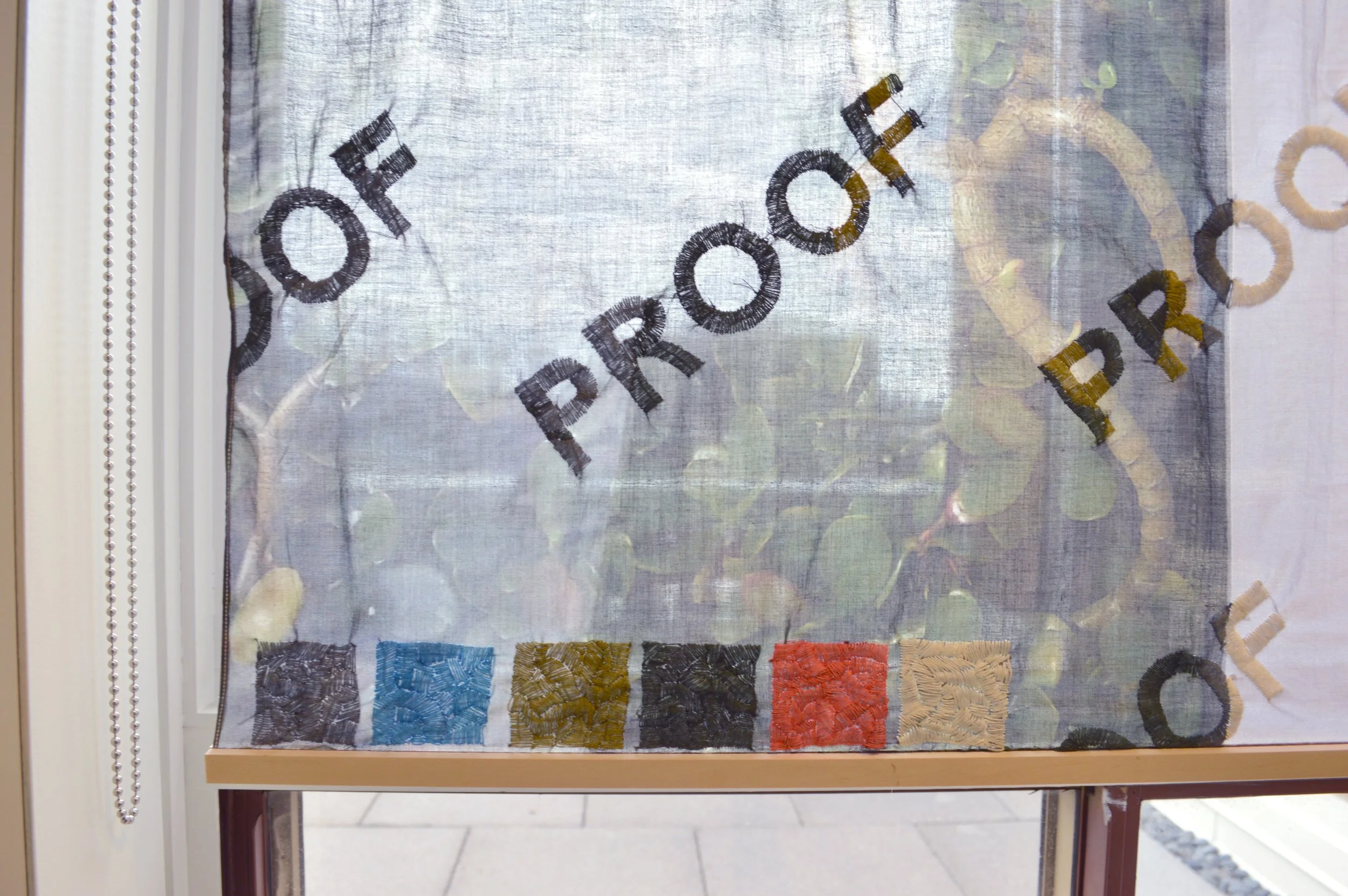

Leaving space
nylon and metal wire, set of three boxes, each approx. 15" x 10" x 6", 2019. Documentation of a group exhibition title 'Et dis-moi: why is the past tense always longer?' at Stewart Hall Gallery, curated by Maude Hénaire. Photo by Alexis Bellavance.

Leaving space
nylon and metal wire, set of three boxes, each approx. 15" x 10" x 6", 2019. Documentation of a group exhibition title 'Et dis-moi: why is the past tense always longer?' at Stewart Hall Gallery, curated by Maude Hénaire. Photo by Alexis Bellavance.



















































